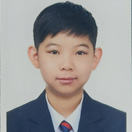![[The AI Generation Model Code. Photo Credit to Pixabay]](https://cdn.heraldinsight.co.kr/news/photo/202403/3970_7837_378.jpg)
In a bold move to revolutionize the landscape of AI-powered video editing, Pika Labs, founded by Demi Guo and Chenlin Meng, has launched a groundbreaking text-to-video generation tool.
This transformative tool represents an advanced technology that utilizes textual input to dynamically create and generate video content.
Put simply, users can input descriptive text, and Pika's text-to-video generation tool transforms these words into visually compelling video sequences.
The inception of Pika traces back to last winter when Guo and her fellow Stanford computer science Ph.D. classmates, fueled by a desire to create compelling AI-generated movies, set out on their journey.
Undeterred by initial setbacks, Guo and Meng withdrew from Stanford in April, founding Pika with the mission to simplify the video-making process.
Pika's video generation tool, initially accessible via Discord, garnered immense popularity with over 500,000 users and millions of new videos being created weekly.
The surge of interest attracted significant attention from Silicon Valley investors, leading to a rapid influx of $55 million in funding across three rounds.
Pika's journey is marked by a commitment to innovation and an agile approach to AI model development.
Nat Friedman, former GitHub CEO and a prominent investor in the AI sector, played a pivotal role in Pika's early funding rounds.
Impressed by an early demo showcasing the power of a proprietary AI model for video creation, Friedman, alongside frequent co-investor Daniel Gross, provided crucial support through their 2,500-plus GPU cluster.
In the realm of text-to-video generation, various State-Of-The-Art (SOTA) AI modelscontribute to the dynamic and realistic output.
Among these, Diffusion models have emerged as a captivating approach, offering a unique perspective on the synthesis of intricate visual content from textual prompts.
Rooted in probability theory and statistical mechanics, Diffusion models find application across diverse fields, including image and video synthesis.
At their core, these models operate on the principle of simulating the gradual spread of information across a system.
In the domain of image generation, the Diffusion model has proven to be among the most proficient generative models currently available.
While the modeling aspect is imperative for the effective utilization of the Diffusion model, its practical determination poses inherent challenges.
The overarching objective of learning the Diffusion model is to discern the distribution of authentic data, with the ultimate purpose of parameter estimation.
Consequently, the maximization of the model's likelihood assumes paramount importance in the training regimen for the Diffusion model.
In a landscape dominated by innovation and fueled by substantial funding, Pika stands as a beacon of progress, leveraging cutting-edge AI models to redefine the possibilities of video editing.
The infusion of $55 million positions Pika as a key player in the evolving narrative ofAI-driven video content creation, setting the stage for continued advancements and breakthroughs in the field.

Andrew Hwan Choi
Grade 8
Eaglebrook School

